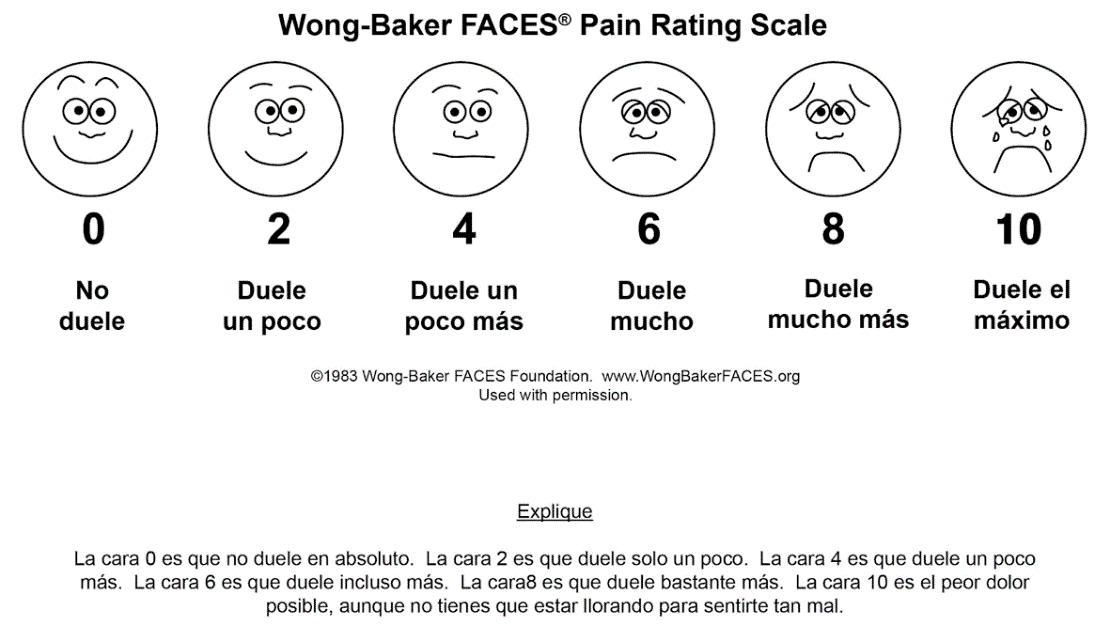Epidermolysis bullosa
1. Types of pain and pain assessment
Pain is a difficult to define symptom as it is something subjective which can only be defined by the person suffering it. According to the International Association for the Study of Pain (IASP), pain is an “unpleasant sensorial and emotional experience associated to an injury of the tissues (both present in the present moment and potential)”. Likewise, pain is influenced in many degrees by biological, psychological, spiritual, social and cultural factors, so the people “learn” the concept of pain throughout their life.
Some considerations should be considered regarding pain:
- Each person’s pain description must be respected.
- The verbal description is only one of the many behaviours to express pain; the incapacity to verbally communicate does not imply that person does not feel pain.
Kinds of pain
Depending on its duration in time, the pain can be acute or chronic. Acute pain is a short-term experience which usually appears when an injury is caused and disappears when said injury is healed or disappears. It is usually clearly localized, produces an alert and stress state which usually has an adaptative function. This is the most frequent kind of pain people with EB suffer either due to the disease itself (blisters, new accidental wounds) or due to its treatment (change of dressing, physiotherapy, surgical interventions, etc.).
On the other hand, chronic pain last longer that the healing of the injury causing it or is associated to a chronic disease and can last over 3 or 6 months. In this case, it stops being adaptative and it can have negative effects in the psychosocial functioning and wellbeing of the people.
Since the acute pain is very frequent and recurrent in people with EB, they are at risk of developing chronic pain. It is usually associated to the daily care of the skin and it can also affect to practically all body organs (oral pain, swallowing pain, bones and/or joints pain, ocular pain, etc.).
How do we evaluate pain
The verbal description of pain is one of the ways to express pain. It is important to evaluate the intensity (it will be mild, moderate, or severe depending on whether it interferes with daily live activities), the location of pain (if it is on the external or internal side of the body and even if it stays at place or it moves to other areas), the characteristics (its “poignant”, does it cause “burning”, “tingling” or other sensations) and its course (if it is continuous during time or its punctual as it appears suddenly associated to painful procedures, is it present when walking, does it appear at night, is it associated with nourishment, etc.). In people who cannot express verbally what they feel we can observe signs related to pain: crying or screaming, change in the facial expression, increasing of sweat, queasiness, dizziness, decreasing of energy, positions to prevent pain, extremestillness, etc.
There are some evaluation scales which might help us quantify the pain intensity. It is important that the health professionals indicate us which scale is more adapted to the age and comprehension abilities of each person.

